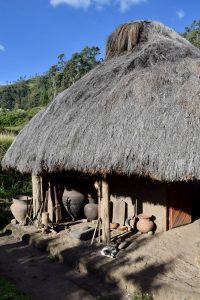
Angochagua, Ecuador, May 15 (EFE).- Descendants of the Caranqui, one of Ecuador’s indigenous groups, seek to recover their culture and identity with a small museum that houses tools and handicrafts found in pre-Columbian tombs across the northern province of Imbabura.
The museum – a small hut with adobe walls and a palm thatch roof – is located here in Angochagua, one of the towns where the Caranquis purportedly lived more than 500 years ago.
The museum’s Quechua name is Samay Huasi, meaning “rest house.”
The museum houses photographs, looms, clothing and other items such as vases, pots and what appear to be the legs of ceramic dolls that were found within burial mounds where local chiefs were put to rest.
“Everything that is exhibited here is part of the memory of the community’s grandfathers,” Fernando Colimba, the museum’s founder, told EFE.
Colimba is one of the descendants of the Caranqui, who are estimated to number 6,360.
During the guided tours at the museum, tourists listen to tales about the community’s ancient traditions.
“The idea is to explain how our ancestors worked, for example, how they produced wool products, or how they used kitchen utensils,” Rosa Sandoval, Colimba’s wife, said.
The museum, an initiative launched by the Colimba family, was founded 15 years ago to help preserve everyday objects used by the Caranqui.
These attempts to recover an identity that has been eroded by the last five centuries is a relatively new phenomenon, archeologist Simeon Floyd, professor at the San Francisco University in Quito, told EFE.
“There is little information” about the time when the various cultural groups living in Ecuador’s mountainous regions started experiencing their first idiomatic and cultural transformations, he said.
According to the archeologist, however, the arrival of the Incas and the Spanish conquest were turning points.
Andean communities have recently started to become interested in more particular aspects of their history, as they have come to acknowledge that “they were not always Quechua or Runa” but part of a more ancient ethnic group.
Archeological findings have shown that the Caranqui created a highly-organized society.
Some archeologists have suggested that the Caranqui created a quasi-state, or even a confederation of similar groups through which they attempted to defend their societies against the Inca empire, which ended up absorbing them not long before the Spaniards arrived.
